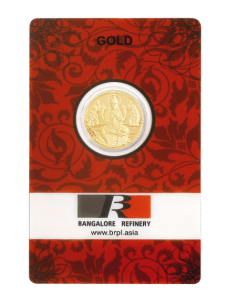Exclusive Deals & Trending Items


Muthoot Pappachan Swarnavarsham Gold Oval Lakshmi Pendant of 2 gms in 24 KT 999 Purity Fineness
Shop NowWhen thinking about where to put your money, gold is a top pick. It has beaten other investments in 2025. Over ten years, it has given strong returns, making it a great choice for diversifying your portfolio.
Choosing how to invest in gold is a big decision. You can go for a Monthly SIP or Spot Buying. Both have their good points, but which one is better for you? Knowing the details of these strategies is key to making a smart choice.
Key Takeaways
- Gold has been a top-performing asset in 2025.
- Investing in gold can be done through various strategies.
- Monthly SIP and Spot Buying are two popular methods.
- The choice between SIP and Spot Buying depends on your investment goals.
- Understanding the pros and cons of each strategy is essential.
Understanding Gold as an Investment Asset in 2025
Gold is still a top choice for investors in 2025. As the economy changes, knowing how gold fits into your portfolio is key.
The Enduring Value of Gold in Indian Investment Portfolios
Gold has always been a key part of Indian investment plans, especially when the economy is shaky. It’s a solid choice against inflation and market ups and downs. “Gold is a safe-haven asset that investors turn to when they are uncertain about the future,” says a leading financial analyst. The data shows that gold is as valuable as equity mid-caps, proving its worth in a portfolio.


Gold’s Performance in the Current Economic Climate
The world is facing many challenges, like global tensions and currency changes. Gold has stood strong in these times. It’s becoming a go-to for those seeking stability.
Key Factors Influencing Gold Prices in 2025
Several things affect gold prices, so staying updated is crucial. Knowing these can help you make smart investment choices.
Global Economic Indicators
Things like GDP, inflation, and jobs affect gold prices worldwide. When the economy slows, gold often gets more investment, raising its price.
Indian Market Specifics
In India, things like import duties, festival demand, and the rupee’s value against the dollar shape gold prices. Keeping an eye on these details is important for effective gold investment.
Understanding these factors can help you make better gold investment choices in 2025. Whether you’re experienced or new, gold is a key part of a well-rounded portfolio.
What is a Gold SIP (Systematic Investment Plan)?
A Gold SIP lets you invest a set amount of money in gold at regular times. It’s a smart way to invest in gold. This method helps you avoid the ups and downs of the market.
Core Principles of SIP in Gold Investments
The main idea of a Gold SIP is rupee cost averaging. This means you buy more gold when it’s cheaper and less when it’s pricier. Over time, this can make your investment cost less per unit.
“The key to making money in gold is not timing the market but time in the market.” This idea is key for Gold SIPs, as they focus on long-term investing.
Different Types of Gold SIPs Available in India
India has many Gold SIP options for investors:
Gold ETF SIPs
Gold ETF SIPs let you invest in gold without needing to store it physically. These are traded on stock exchanges and follow gold’s price.
Digital Gold SIPs
Digital Gold SIPs let you buy small amounts of digital gold. It’s stored online, making it easy and safe to invest.
Gold Mutual Fund SIPs
Some mutual funds invest in gold. Using a SIP for these funds can give you gold exposure while using a fund manager’s skills.
| Type of Gold SIP | Investment Medium | Key Benefit |
|---|---|---|
| Gold ETF SIPs | Gold Exchange-Traded Funds | Traded on stock exchanges, linked to gold prices |
| Digital Gold SIPs | Digital Gold Platforms | Convenient, secure, and electronically stored |
| Gold Mutual Fund SIPs | Mutual Funds investing in gold | Professional management, diversified portfolio |
Setting Up a Gold SIP: A Step-by-Step Guide for Indian Investors
To start a Gold SIP, just follow these steps:
- Choose a trusted digital gold platform or a mutual fund with Gold SIP.
- Decide how much you want to invest regularly.
- Set up auto-debit from your bank to the platform.
- Keep an eye on your investment and make changes if needed.


By following these steps, you can begin your Gold SIP journey. It’s a great way to invest in gold systematically.
Understanding Spot Buying in Gold Investments
Spot buying in gold investments means buying a large amount of gold at once. This is different from investing a little bit regularly, like with a Systematic Investment Plan (SIP).
The Mechanics of One-Time Gold Purchases
Spot buying lets you buy gold at today’s market price. You invest a big amount hoping the price will go up later, making you a profit.
The world’s economy, including trade wars between countries like China, Canada, and Mexico, affects gold prices. So, knowing how one-time gold purchases work is key.
Popular Spot Buying Options in the Indian Market
In India, you can choose from several ways to buy gold:
Physical Gold (Coins and Bars)
Many Indians prefer buying physical gold. You can get gold coins and bars from approved dealers or banks.
Digital Gold Platforms
Digital gold platforms let you buy gold online and keep it digitally. This is easy and you don’t need to store it physically.
Gold ETFs
Gold ETFs are like shares but for gold. They let you invest in gold without having to hold the physical metal.
“Gold ETFs offer a convenient way to invest in gold, providing the benefits of diversification and liquidity.”
Timing Considerations for Spot Purchases in Indian Markets
When buying gold, timing is everything. You must think about global economic trends, currency changes, and local demand.
A market analyst says, “The key to successful spot buying is timing your purchase correctly, taking into account both global and local market conditions.”
By understanding these factors, you can make smart choices about when to invest in gold through spot buying.
Monthly SIP vs Spot Buying: Key Differences Explained
Choosing between Monthly SIP and Spot Buying for gold investments depends on your investment style and how much risk you’re willing to take. It’s important to know these differences to match your investment plan with your financial goals.
Investment Approach and Philosophy
Monthly SIP for gold means investing a set amount regularly. This method is good for long-term plans and helps smooth out market ups and downs.
Spot Buying, on the other hand, means buying gold at today’s price. It’s for those who like to keep a close eye on the market and make quick decisions.
Risk Management Comparison
Risk Management is key in any investment. Monthly SIP helps manage risk by spreading out the cost over time. This way, you buy more when prices are low and less when they’re high.
Spot Buying, however, can be riskier because it’s a single, big investment. It’s more exposed to market drops.
Flexibility and Liquidity Analysis
Monthly SIP gives you more flexibility. You can change how much you invest or even pause it if needed. This is great for managing your money and adjusting to life changes.
Spot Buying, being a one-time deal, offers less flexibility. But, it does give you quick access to your money if you want to sell your gold.
Initial Investment Requirements
The amount you need to start is another big difference. Monthly SIP lets you start with smaller amounts, making it easier for more people to invest.
Spot Buying, however, usually needs a bigger upfront payment. This can be a hurdle for some investors.
In conclusion, picking between Monthly SIP and Spot Buying for gold investments should match your financial goals, risk level, and how long you plan to invest. Knowing the main differences helps you make a choice that fits your investment strategy.
The Power of Rupee Cost Averaging in Gold SIPs
Exploring gold investment in 2025? Learning about rupee cost averaging in Gold SIPs can change the game. Gold prices hit new highs as investors looked for safety. This shows how crucial a good investment plan is, with rupee cost averaging playing a big role.
How Rupee Cost Averaging Works with Gold
Rupee cost averaging means investing a set amount regularly, no matter the market. It’s simple yet powerful for Gold SIPs. You buy gold at set times, which smooths out the cost over time.
Benefits During Market Volatility
Gold investors worry about market ups and downs. But rupee cost averaging helps. By investing the same amount each time, you buy more gold when it’s cheap and less when it’s expensive. This even out your costs, making volatility less of a problem.
Real-World Examples of Rupee Cost Averaging in Indian Gold Markets
The success of rupee cost averaging is clear in different market situations.
During Bull Markets
In a bull market, gold prices go up. It might seem odd, but rupee cost averaging still works for you. You get the benefit of the rising trend while spreading out your investment costs.
During Bear Markets
In a bear market, gold prices drop. Rupee cost averaging lets you buy more gold at these lower prices. This prepares you for when the market goes back up, as you’ll have more gold.
Rupee cost averaging in Gold SIPs is a key strategy for gold investors. It helps you make better choices and could improve your returns.
Timing the Market: The Challenge of Spot Buying
Buying gold at the right time is hard for many investors. They want to buy low and sell high, but it’s tough to do this every time. Spot buying gold needs perfect timing, which is a big challenge.
Recent economic signs, like the ISM Manufacturing and Atlanta Fed GDP data, suggest a slowdown might be coming. This makes timing the market even harder and more complex.
The Psychology of Market Timing
Market timing is all about psychology. Investors often make decisions based on emotions. They buy when prices are high, fearing they’ll miss out, and sell when prices drop, fearing losses. This can lead to bad investment choices.
Knowing the psychology behind market timing can help. Setting clear goals and sticking to a plan can reduce emotional decisions. This can improve investment outcomes.
Historical Success Rates of Timing Gold Markets
Timing the gold market has always been tough. Even pros struggle to predict market moves. Studies show most investors who try to time the market do worse than those who invest for the long term.
Looking at past data shows the challenges of market timing. High volatility periods tempt investors to time the market, but these are often when big losses happen.
Tools and Indicators for Better Timing Decisions
While timing the market is hard, tools and indicators can help. These include technical analysis and fundamental indicators.
Technical Analysis Approaches
Technical analysis looks at past market data to predict future prices. It uses chart patterns, trend lines, and indicators like moving averages and the Relative Strength Index (RSI).
For example, moving averages can show gold price trends. A golden cross, where a short-term average crosses above a long-term one, can signal a rise in prices.
Fundamental analysis examines economic indicators to predict gold price changes. For instance, gold often goes up during economic uncertainty as investors seek safe assets.
Watching indicators like the ISM Manufacturing Index and GDP forecasts can help predict market moves.
By using both technical and fundamental analysis, investors can make better timing decisions. But, it’s important to remember that no method can guarantee success in timing the market.
Historical Performance Analysis: SIP vs Spot Buying (2015-2024)
To make the most of your gold investments in 2025, it’s crucial to understand how SIP and Spot Buying have performed over the years. The historical performance of these investment strategies can provide valuable insights into their potential future performance.
Five-Year Performance Comparison in Indian Markets
Gold SIPs have shown a consistent performance over the past five years. They averaged an annualized return of 8-10%. This consistency is due to the rupee cost averaging effect, which reduces the impact of market volatility.
In contrast, Spot Buying has shown varied returns over the same period. These returns largely depend on the timing of the investment. Investors who bought gold during price dips have generally seen higher returns.
| Investment Strategy | 2019 | 2020 | 2021 | 2022 | 2023 |
|---|---|---|---|---|---|
| SIP | 8% | 12% | 7% | 9% | 11% |
| Spot Buying | 10% | 15% | 5% | 8% | 12% |
Ten-Year Performance Comparison
Looking at the 10-year performance, gold has delivered robust annualized returns, outpacing inflation. SIPs have continued to show a steady performance, with less volatility compared to Spot Buying.
Performance During Economic Downturns
Economic downturns, such as the COVID-19 pandemic and the 2018-2019 market volatility, have tested the resilience of both SIP and Spot Buying strategies.
COVID-19 Impact Period
During the COVID-19 pandemic, gold prices initially dropped but then surged as investors sought safe-haven assets. SIP investors benefited from lower average costs due to continued investments during the downturn.
2018-2019 Market Volatility
In the 2018-2019 period, Spot Buying faced challenges as market timing became critical. Investors who timed the market correctly were able to capitalize on the lower prices.
Both SIP and Spot Buying have their strengths and weaknesses. Understanding their historical performance can help you make more informed investment decisions in 2025.
Projected Returns for Gold in 2025: Expert Forecasts
Investors are watching the projected returns for gold closely as 2025 approaches. Economic factors and expert forecasts are key. The short-term outlook for gold is influenced by the geopolitical landscape, economic conditions, and the upcoming Federal Open Market Committee (FOMC) meeting.
Economic Factors Influencing 2025 Projections
Several economic factors will shape the gold prices in 2025. These include inflation rates, interest rates, and economic growth. Experts say that if inflation goes up, gold prices might rise as investors look for safe assets.
Indian and Global Expert Opinions on Gold Performance
Experts worldwide, including in India, are cautiously optimistic about gold in 2025. A recent survey shows many predict gold will remain a valuable investment. This is because of its performance during economic downturns.
“Gold remains a safe-haven asset, and its value tends to increase during times of economic uncertainty,” said a leading financial analyst.
Potential Impact of Global Events on Gold Prices
Global events, like geopolitical tensions and economic sanctions, can greatly affect gold prices. Investors should watch these closely as they can cause market volatility.
- Geopolitical tensions
- Economic sanctions
- Global economic trends
Domestic Factors Affecting Indian Gold Markets
In India, factors like the festival season demand, government policies on gold imports, and local economic conditions will influence gold prices in 2025.
Understanding these factors can help investors make informed decisions. By keeping up with expert forecasts and market trends, you can navigate the gold market in 2025 better.
Tax Implications of Different Gold Investment Strategies in India
Understanding the tax implications of gold investments is key to getting the most out of your investments in India. You want to know how much of your earnings you’ll keep after taxes.
Taxation of Physical Gold Investments
Investing in physical gold, like coins, bars, or jewelry, has its own tax rules. In India, physical gold is seen as a capital asset. This means selling it is taxed as capital gains.
But, there’s a big difference between long-term and short-term gains. Long-term gains, held for over three years, are taxed at 20% with indexation benefits. Short-term gains, held for three years or less, are taxed based on your income tax slab.
Tax Considerations for Digital Gold and ETFs
Digital gold and ETFs are modern alternatives to physical gold. Their tax rules are a bit different. For both digital gold and ETFs, gains over three years are long-term capital gains, just like physical gold. But, the tax treatment can change based on the investment’s structure.
Long-term vs Short-term Capital Gains Tax Impact
The time you hold your gold affects your tax. Long-term gains are taxed at a lower rate (20% with indexation). Short-term gains are taxed based on your income tax slab. This makes choosing your investment time frame very important.
Recent Tax Policy Changes Affecting Gold Investments
Recent tax changes have brought benefits for certain gold investments. For example, Sovereign Gold Bonds (SGBs) and Gold Monetization Schemes are tax-free if held until maturity. This makes them good choices for those looking to save on taxes.
Here’s a quick look at the tax rules for different gold investments:
| Investment Type | Short-term Capital Gains Tax | Long-term Capital Gains Tax |
|---|---|---|
| Physical Gold | Taxed as per income tax slab rate | 20% with indexation benefits |
| Digital Gold/ETFs | Taxed as per income tax slab rate | 20% with indexation benefits |
| Sovereign Gold Bonds | Exempt if held till maturity | Exempt if held till maturity |
When planning your gold investment strategy, remember to consider these tax implications. This will help you keep more of your earnings. Getting advice from a financial advisor can guide you through these details and help you make smart choices.
Risk Assessment: Volatility Management in Gold Investments
Thinking about investing in gold? It’s important to know the risks. Gold is seen as a safe choice, but it has its own risks.
Measuring and Comparing Risk Profiles
Gold investment strategies need a clear risk understanding. Systematic Investment Plans (SIPs) in gold and buying gold directly have different risks. SIPs help by spreading out the cost over time, which can lower volatility.
Buying gold directly at market price is riskier because of price changes. This method is more exposed to market timing risks.
Volatility Patterns in Indian Gold Markets
Indian gold markets have unique patterns of volatility. These are influenced by festival demand, economic policies, and global trends. Knowing these patterns helps investors make better choices.
Risk Mitigation Strategies for Each Approach
Each investment method needs its own risk reduction plan. SIPs use the averaging effect to lessen timing risks. For direct buying, understanding market trends and setting a stop-loss can help manage risks.
Diversification Techniques
Diversifying investments is a key risk reduction strategy. By investing in different areas like stocks, bonds, and real estate, along with gold, you can lower your overall risk.
Hedging Strategies
Hedging involves using derivatives like futures or options to protect against gold market losses. It’s a complex strategy for experienced investors.
| Investment Strategy | Risk Level | Risk Mitigation Technique |
|---|---|---|
| SIP in Gold | Moderate | Rupee Cost Averaging |
| Spot Buying | High | Market Timing, Stop-Loss |
| Diversified Portfolio | Low to Moderate | Diversification Across Asset Classes |
Understanding risks and using the right strategies can help investors manage gold investments better.
Ideal Investment Horizons for SIP and Spot Buying
Investment horizons are key in choosing between SIP and spot buying for gold. The length of your investment affects your returns and risk. It’s important to consider this when planning your investments.
Short-term Investment Considerations (1-3 Years)
Spot buying might be better for short-term investments. It lets you take advantage of current market chances. But, gold prices can change quickly, which is a risk.
Key considerations for short-term investments include:
- Market timing risks
- Potential for quick returns
- Higher liquidity needs
Medium-term Planning (3-7 Years)
In the medium term, SIP is a good choice. It spreads out the cost of your investment over time. This helps reduce the risks from market ups and downs.
Rupee cost averaging is a big plus of SIP in the medium term. It lets you buy gold at different prices, which can be beneficial.
Long-term Wealth Building (7+ Years)
For long-term investments, SIP is often the best choice. It uses compounding and rupee cost averaging to your advantage. Mutual funds, especially those in gold, are great for long-term goals. They offer compounding benefits and can match your risk level.
- Benefits of long-term SIP include:
- Compounding returns
- Reduced timing risks
- Wealth creation
Goal-based Investment Timeline Planning
It’s important to match your gold investment strategy with your financial goals. Whether you’re saving for something specific or building wealth, knowing your investment time frame helps decide between SIP and spot buying.
To create a goal-based investment plan:
- Define your financial objectives
- Assess your risk tolerance
- Choose the appropriate investment strategy
- Regularly review and adjust your plan
Combining Strategies: The Hybrid Approach to Gold Investing
To make your gold investment portfolio better, try a hybrid approach. It combines the steady growth of SIPs with the quick gains of Spot Buying. This mix helps you manage risks and grab market chances well.
Creating a Balanced Gold Investment Portfolio
Having a diverse gold investment portfolio is key to reducing risks and boosting returns. Mixing SIPs and Spot Buying makes a strong strategy that adjusts to market changes. A hybrid approach lets you enjoy SIPs’ steady growth and Spot Buying’s quick wins.
Think about your investment goals, how much risk you can take, and the market outlook when planning your hybrid portfolio. This will help you figure out the best mix of SIPs and Spot Buying.
Allocation Strategies Between SIP and Spot Buying
Choosing how much to invest in SIPs and Spot Buying is crucial. Your financial goals and market conditions should guide your choices. For example, you might put more in SIPs for steady growth and use Spot Buying for quick gains.
- Start with 70% of your gold investment in SIPs for steady growth and 30% in Spot Buying for quick wins.
- Change your mix based on market trends and economic signs to get better returns.
Rebalancing Techniques for Optimal Returns
Regular rebalancing keeps your SIPs and Spot Buying mix right. As the market changes, your portfolio might not stay balanced. This could increase risk or make you miss out on chances.
Rebalancing means checking your portfolio often and tweaking SIPs and Spot Buying to match your strategy. It helps manage risk and keeps your investments on track with your financial goals.
Adapting Your Strategy to Changing Market Conditions
The gold market is shaped by many things, like economic signs, world events, and currency changes. A hybrid approach lets you adjust your strategy as these factors change.
Keep up with market trends and be ready to change your SIPs and Spot Buying mix. For example, when the market is very volatile, you might invest more in SIPs to spread out costs. Use Spot Buying to take advantage of lower prices.
Digital Gold Platforms: Modern Options for Both Strategies
Digital gold platforms are now a popular way to invest in gold. They offer easy buying, no storage worries, and better liquidity than physical gold. This makes them a great choice for many investors.
Top Digital Gold Platforms in India
In India, several digital gold platforms have become well-known. Each offers unique features and benefits. Here are some of the best ones:
MMTC-PAMP
MMTC-PAMP is a joint venture between MMTC Ltd. and PAMP Group. It provides high-quality digital gold. It’s a secure and transparent way to invest in gold.
Paytm Gold
Paytm Gold lets users invest in gold starting from ₹1. It has a user-friendly interface and flexible investment options.
PhonePe Gold
PhonePe Gold allows users to buy and sell gold digitally. You can also redeem physical gold if needed. It offers a smooth investment experience.
Google Pay Gold
Google Pay Gold makes investing in gold easy. It has real-time price updates and simple transactions.
Comparing Fees, Security, and Convenience
When picking a digital gold platform, look at fees, security, and convenience. Here’s a comparison of the top platforms:
| Platform | Fees | Security | Convenience |
|---|---|---|---|
| MMTC-PAMP | 0.30% making charge | Highly secure, insured | Easy online transactions |
| Paytm Gold | No making charge | Secure, insured by banks | User-friendly interface |
| PhonePe Gold | No making charge | Highly secure, partnered with banks | Seamless transactions |
| Google Pay Gold | No making charge | Secure, real-time updates | Easy, intuitive interface |
Integration with Traditional Investment Portfolios
Digital gold platforms can fit well into traditional investment portfolios. They offer a diversified investment strategy. Investors can put a part of their portfolio into gold. This can reduce risk and possibly increase returns.
Case Studies: Real Investor Experiences with Both Approaches
Monthly SIP versus Spot Buying in gold investments is shown through real-life stories. Many investors in India have seen benefits during economic uncertainty.
Success Stories with Monthly Gold SIPs
Monthly SIPs in gold have helped many investors. For example, a young professional started with ₹5,000 monthly. Over 5 years, the investment grew, helping during tough times.
- A 35-year-old from Mumbai started with ₹10,000 monthly in 2018. By 2023, it grew by over 50%, helping with her daughter’s education.
- A 40-year-old from Delhi invested ₹5,000 monthly. This disciplined approach led to significant returns over 7 years.
Profitable Spot Buying Experiences
Spot buying has also been profitable for those who timed the market right. An investor from Bangalore bought gold in 2020 and sold in 2022, making a big profit.
Spot buying’s key benefits include:
- Potential for high returns with correct timing
- Flexibility to invest a lump sum
- Chance to profit from market dips
Lessons Learned from Investment Challenges
Not all investments meet expectations. Some faced market volatility or timing issues. Yet, these experiences taught the value of diversification and risk management.
“Investing in gold through SIP helped us average out costs and reduce market volatility’s impact. It’s a disciplined approach that has worked well for our long-term goals.” – Rohan M., Investor
Strategies Adapted by Seasoned Indian Gold Investors
Experienced investors adjust their strategies based on market conditions. Some use gold SIPs for long-term stability. Others spot buy for short-term gains.
| Investment Strategy | Market Condition | Investor Action |
|---|---|---|
| Monthly SIP | Volatile Market | Continue SIP for rupee cost averaging |
| Spot Buying | Price Dip | Invest lump sum |
| Hybrid | Stable Market | Rebalance portfolio between SIP and spot buying |
Conclusion: Making the Right Gold Investment Choice for 2025
When looking at gold investments for 2025, Monthly SIP and Spot Buying each have benefits. Your choice should match your financial goals, how much risk you can take, and your knowledge of the market.
The direction of gold prices will be shaped by what central banks do and the state of the global economy. Knowing the differences between SIP and Spot Buying helps you make a choice that fits your plan.
Whether you choose the steady path of Monthly SIP or the quick moves of Spot Buying, think it through. Your choice should be based on a deep look at what you want to achieve. As you explore gold investments in 2025, weigh your options well to get the best results.



















